E-Archive
Articles
in Vol. 9 - May Issue - Year 2008
Singapore Airshow 2008
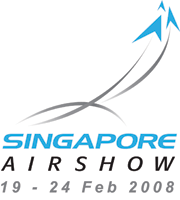
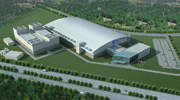
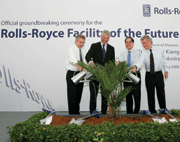
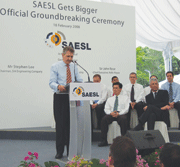

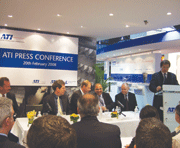
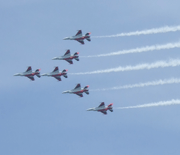
The inaugural Singapore Airshow 2008 took off with a roaring start with its world-class custom-built facilities and the overwhelming support of many key aviation and aerospace companies, making it the world’s third largest airshow, behind Farnborough and Paris. The resounding success of this prestigious event has not only cemented the Singapore Airshow as a must-attend event on the global aviation calendar but also strengthens Singapore’s status as Asia’s premier aviation hub.
The new airshow was held from the 19-24 February 2008 at the all-new Changi Exhibition Centre (CEC) which is a huge multi-dimensional facility built on a 30 hectare site alongside Singapore’s world-renowned Changi Airport. It has a fully air-conditioned exhibition hall of 40,000 sqm and an outdoor display area of 100,000 sqm. Spanning the beautiful 400 metre seafront are rows of chalets with roof gardens for exhibitors and their guests to enjoy a 360-degree view of the show site and aerial displays.
More than 800 companies from 42 countries, representing 59 of Forbes’ top 100 aerospace firms participated and displayed their wares during the airshow which is well anchored to capitalise on the dynamic Asia-Pacific’s multi-billion dollar aviation industry. It has also attracted over 7000 exhibitors from 51 countries and more than 35,000 trade visitors from 112 countries including the largest delegation groups with 240 government and international delegations.
The aviation industry in the Asia-Pacific is booming and enjoying rapid growth. Significant opportunities have emerged with the proliferation of low-cost carriers, constructions of new airports and expansion of MRO operations across the region.
In Singapore, close to half a billion dollars worth of investments linked to the aerospace industry was unveiled and finalised on the sidelines of the airshow (see highlights).
The show closed on a high note with over US$13 billion in sales of aircraft and related equipment announced during show days, In addition, a further US$ 2.6 billion was also generated from contracts for facilities and other services, demonstrating the surging growth of the region’s aviation industry at Asia’s largest-ever trade event.
Rolls-Royce Facility Of The Future
Rolls-Royce has taken its first step towards its S$ 320 million (US$ 225 million) Trent aero engine facility in Singapore with a groundbreaking ceremony at the new Seletar Aerospace Park.
Its first in Asia, the 8 hectare plant, the Facility of the Future will be the most modern Rolls-Royce production engine assembly and test facility for large commercial aero engines in the Trent series, the Trent 1000 and the Trent XWB used in large commercial planes like the Boeing 787 Dreamliner and the Airbus A350.
Scheduled for completion in 2009, the facility will operate on lean assembly and flowline operating principles developed by Rolls-Royce over the last decade. This will result in significant operational efficiencies and improved service quality.
In addition to its technological advances, the factory will also be built according to the “Green Mark” standard used by the Building and Construction Authority to recognise best practices in environmental design and performance. This is expected to reduce the potential environmental impact and improve sustainability.
Employing about 330 people in this new facility, the Rolls-Royce venture is a significant boost for the aerospace industry in Singapore and is expected to spin-off other aerospace investment and attract a lot of aerospace suppliers here.
SAESL Breaks Ground On New S$60 Million Facility Extension
Singapore Aero Engine Services (SAESL) broke ground on the site for a new two-storey, 12,000 sqm development located at Calshot Road in Changi, Singapore.
SAESL which specialises in the maintenance, repair and overhaul (MRO) of Rolls-Royce Trent aero engines has outgrown its current facility and will invest S$ 61 million (US$ 43 million) in the new extension that will significantly increase the facility’s capacity and will also strengthen the firm’s engine component repair capability when completed by the end of 2009.
The new development will integrate with the existing building, enhance SAESL’s service offerings and build on the company’s position as a Trent Centre of Excellence. SAESL hopes the facility will contribute to its reputation as an industry leader in repairing Trent engine.
The ceremony also marked another significant milestone for SAESL as it officially welcomed its new Chief Executive Officer, Gary Nutter, who assumes his role in February 2008 from the outgoing CEO John Horsburgh. John Horsburgh has assumed another position within Rolls-Royce, as the Chief Operating Officer of the company’s Facility of the Future to be located at the new Seletar Aerospace Park in Singapore.
Airfoil Technologies International Launches Singapore Repair and Technology Development Centre
Airfoil Technologies International (ATI) announced the launch of a Repair and Technology Development Centre (SRTDC) on the sidelines of the Singapore Airshow 2008. This initiative will focus ATI experience, technology and expertise to existing and future product and services. The long term strategy is intended to provide new product and technology development services to their customers, OEM’s, partners and the industry.
The SRTDC will be developed as an ATI Center of Excellence for Component Repair and Technology Development and will help support the ever growing repair needs of their OEM partners such as GE and SNECMA. The complexity of products that come from the new generation engines requires that technology and processes be advanced and applied to accomplish the performance and yields that the industry demands.
The United States-based company which set up shop here in 1998 with 186 employees in a 62,000 sq ft facility, has now grown under the leadership of Jimmy Tan, Managing Director of ATI-Singapore, to a 478-strong staff, a 138,000 sq ft facility, and annual sales of US$ 200 million.
The company expects to spend up to US$ 30 million over the next four to five years on the SRTDC project and other development work in Singapore.



























